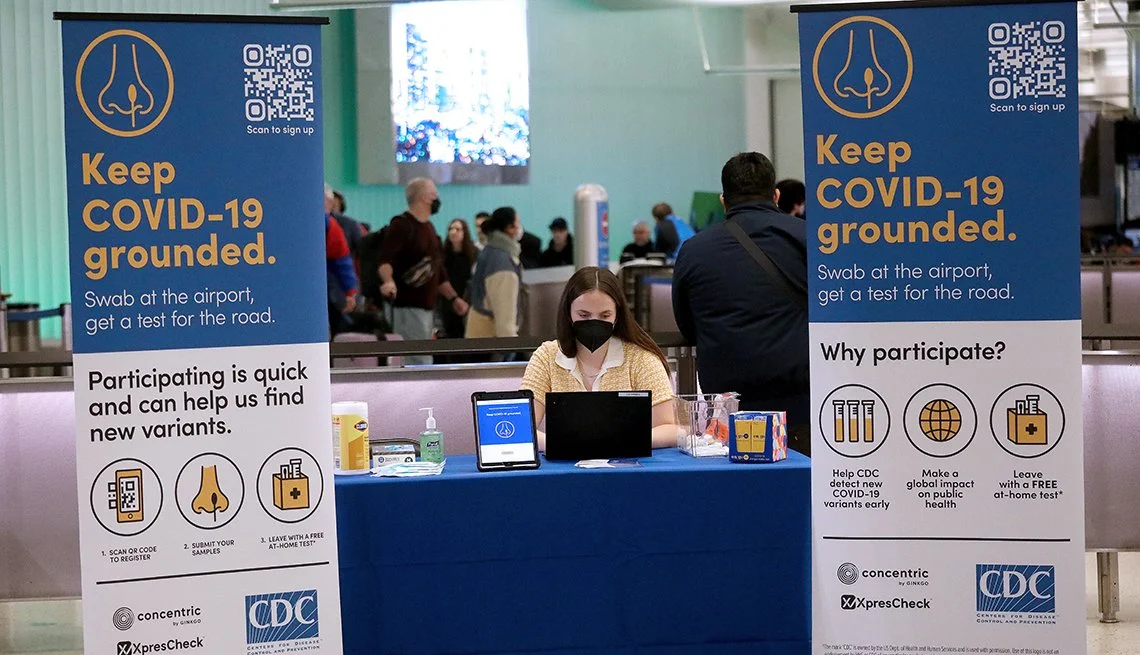Building Biosecurity Infrastructure in a Crisis
When I joined Ginkgo’s Biosecurity Division in 2020, the U.S. was in the midst of a public health emergency. Our mission wasn’t just to ship COVID test kits—it was to build national-scale testing programs. Biosecurity as an industry didn’t exist yet. We had to invent both the products and the operational systems to support them.
In the earliest days, speed and flexibility were paramount. I led the creation of Ginkgo’s physical operations capability from the ground up—establishing internal production, assembly, and fulfillment to meet real-time demand and constant iteration. Over five years, I evolved that foundation into a full-spectrum operations engine that supported both pandemic response and the long-term buildout of a new industry: environmental surveillance. Our efforts enabled program delivery across 800+ U.S. schools, 8 domestic airports, and 6 countries, including a 4-year CDC contract monitoring travelers from 135+ nations.
Traditional supply chains couldn’t keep up with the pace or volatility of pandemic response. Relying on OEMs for fast-changing products—especially test kits—would slow us down and leave us vulnerable to shortages and inflexible MOQs.
Solution: bring it in-house. I led the design and launch of a 15,000 sqft production and distribution center and built an internal ops team that could handle sourcing, assembly, QA, and fulfillment. This infrastructure cut launch timelines by 75% and enabled small-batch production—essential for pilots and establishing product-market fit.
Our in-house capability allowed us to quickly and cost effectively respond to new testing models, shift kit components, and stand up new programs with confidence. It was foundational to our ability to scale.
Highlights
Produced, piloted, and launched 14+ kits and 4 proprietary wastewater samplers.
Scaled internal output from 400 to 2,500+ units/week in under 3 months.
Maintained >95% on-time fulfillment during demand surges and shifting priorities.
Infrastructure for Rapid Iteration
As products stabilized, I transitioned from in-house builds to a scalable external supply network. I sourced and onboarded manufacturers through RFQs, audits, and contract negotiations—maintaining dual production partners for high-volume SKUs to reduce risk and improve reliability. Our operations strategy was designed for fluidity: internal production enabled speed and learning, while a vetted manufacturing network enabled rapid scale-up.
To support international reach and reduce shipping costs, I brought on multiple freight forwarders with specialized export capabilities like shipping to Africa and cold chain transport. At the same time, I evolved our systems infrastructure, implementing NetSuite ERP to unify procurement, inventory, and fulfillment under a scalable, compliance-ready platform.
Highlights:
Onboarded 4 full-scale and 8 prototype manufacturers across North America and Asia.
Enabled 10x scale-up of kit output within 6 wks of design freeze.
Reduced unit costs by 25% for stabilized kits and in house export logistics by 40% through partnerships.
Scaling Supply and Systems
As our operations matured, I built a quality system that balanced speed with regulatory rigor. We needed structure—but not at the expense of momentum. I mapped real-world workflows first, then layered in SOPs and controls where they added clarity and resilience.
Rather than over-engineer too early, I evolved the system in lockstep with product and team growth—eventually deploying a full QMS aligned with FDA QSR to support traceability, CAPA, and documentation across multiple product lines.
Highlights:
Authored and implemented 35+ SOPs spanning intake, production, QA, and fulfillment.
Complied with FDA, ASTM, ISTA, IEC, and ISO standards.
Enabled same-day root cause investigation and containment for QA deviations.



